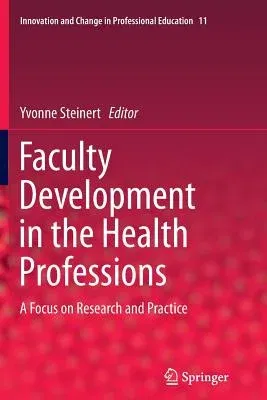This volume addresses all facets of faculty development, including
academic and career development, teaching improvement, research capacity
building, and leadership development. In addition, it describes a
multitude of ways, ranging from workshops to the workplace, in which
health professionals can develop their knowledge and skills. By
providing an informed and scholarly overview of faculty development, and
by describing original content that has not been previously published,
this book helps to ensure that research and evidence inform practice,
moves the scholarly agenda forward, and promotes dialogue and debate in
this evolving field. It will prove an invaluable resource for faculty
development program planning, implementation and evaluation, and will
help to sustain faculty members' vitality and commitment to excellence.
Kelley M. Skeff, M.D., Ph.D., May 2013:
In this text, Steinert and her colleagues have provided a significant
contribution to the future of faculty development. In an academic and
comprehensive way, the authors have both documented past efforts in
faculty development as well as provided guidance and stimuli for the
future. The scholarly and well-referenced chapters provide a compendium
of methods previously used while emphasizing the expanding areas
deserving work. Moreover, the writers consistently elucidate the faculty
development process by highlighting the theoretical underpinnings of
faculty development and the research conducted. Thus, the book provides
an important resource for two major groups, current providers and
researchers in faculty development as well as those desiring to enter
the field. Both groups of readers can benefit from a reading of the
entire book or by delving into their major area of interest and passion.
In so doing, they will better understand our successes and our
limitations in this emerging field. Faculty development in the health
professions has now received attention for 6 decades. Yet, dedicated
faculty members trying to address the challenges in medical education
and the health care delivery system do not have all the assistance they
need to achieve their goals. This book provides a valuable resource
towards that end.


